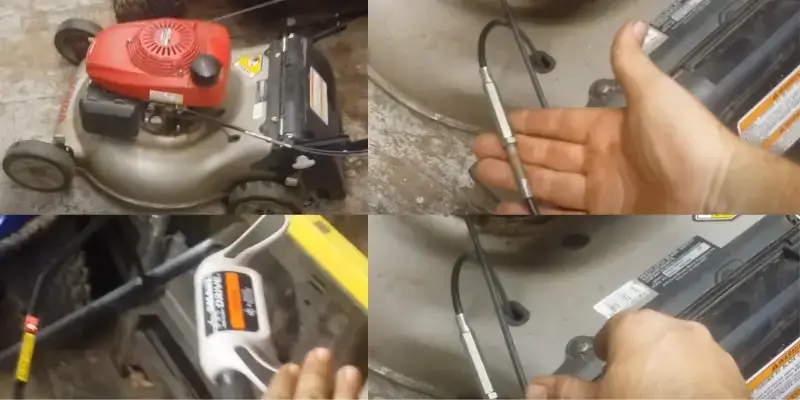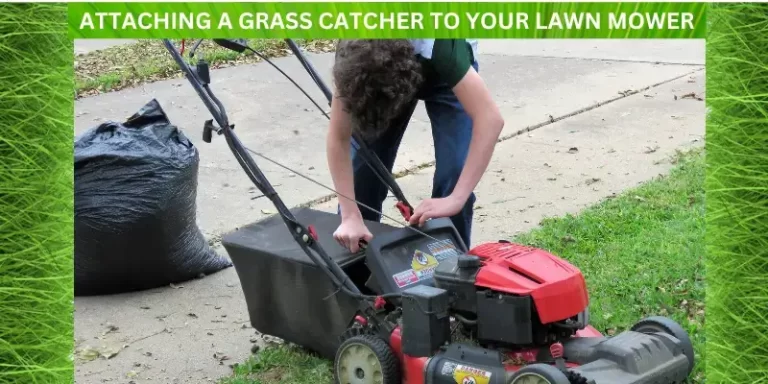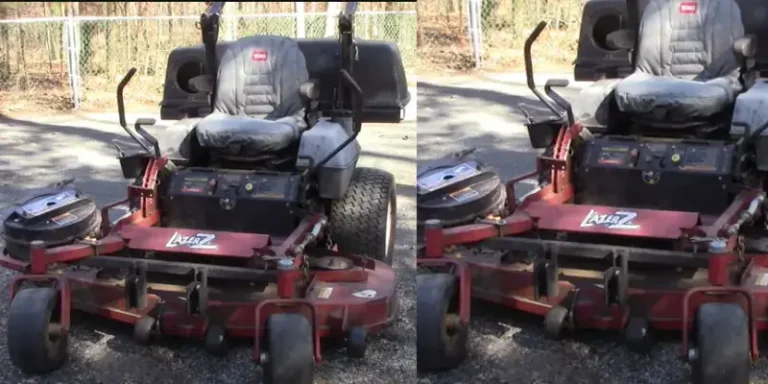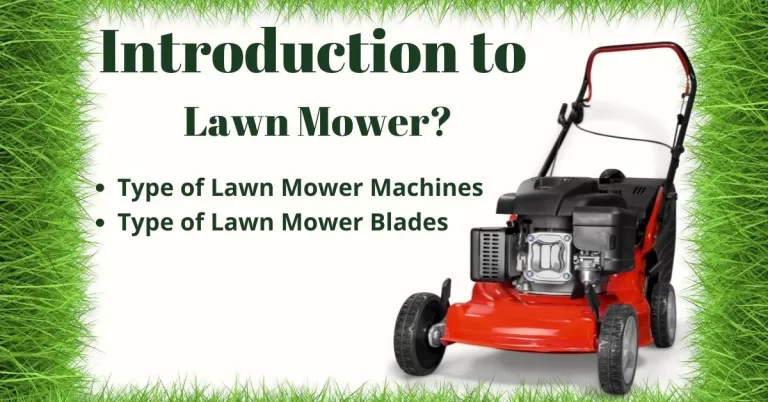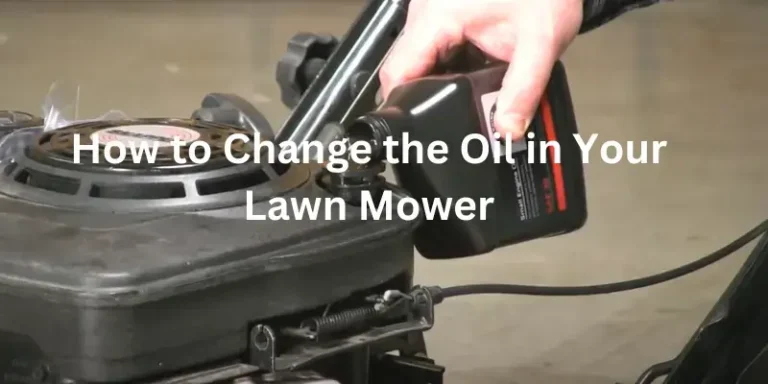Troubleshooting a Slow Self-Propelled Honda Lawnmower: A Comprehensive Guide
The self-propelled Honda Lawn Mower is the first choice for homeowners and gardening professionals. It is very frustrating when you start mowing and your mower starts encountering various problems. Regular maintenance not only prolongs the life of your mower but also enhances your lawn’s appearance.
Overview of Honda’s Self-Propel System
Honda’s self-propelled lawnmowers are renowned for their innovative drive systems that adjust to your walking pace, allowing for a comfortable and uniform mowing experience. These mowers are equipped with a self-propel mechanism that engages a drive belt connected to the mower’s transmission, which then powers the wheels. This feature is particularly useful for maintaining steady speed and reducing physical strain during mowing.
Types of Self-Drive Systems in Honda Mowers
Smart Drive System
The Smart Drive system is designed for ease of use, featuring handle-mounted paddles for rapid speed adjustment. It’s ideal for complex landscaping:
Quick Speed Adjustment:
Change speeds swiftly to navigate around obstacles.
Handle-Mounted Controls:
Conveniently located for easy access.
Ideal for Obstacle-Rich Lawns:
Perfect for gardens with numerous plant beds or varied terrain.
Hydrostatic Cruise Control System
The Hydrostatic Cruise Control system is built for smooth operation over challenging terrain, making it perfect for large, uneven landscapes:
Smooth Operation: Provides consistent speed on rough terrains.
Ideal for Large Areas: Maintains performance over expansive or sloped lawns.
Enhanced Control: Helps handle tough lawn conditions without speed fluctuations.
Variable Speed System
The Variable Speed system offers meticulous control over mower speed, allowing for tailored lawn care:
Precise Speed Control: Adjust speed to suit different sections of your lawn.
Customizable Mowing Pace: Tailor your mowing for varied lawn densities and grass types.
Optimal for Detailed Lawn Care: Ensures uniform cutting across diverse lawn conditions.
Common Causes for Slow Movement in Self-Propelled Honda Lawn Mowers
Drive Belt Issues
The drive belt in your Honda mower is vital for transferring engine power to the wheels, and facilitating movement. When this belt loosens or wears out, it can lead to diminished mower speed and reduced efficiency:
- Problem: The drive belt loosens or wears out, which disrupts power transmission and leads to slower mower speeds.
- Solution: Regularly inspect the belt for any signs of wear or damage and ensure it is properly tensioned.
- Preventive Measure: Replace the drive belt when necessary to ensure consistent performance and prevent further mechanical issues.
Drive Axle and Transmission Wear
The drive axle and transmission are critical for delivering power from the engine to the wheels of your Honda mower. Wear and tear from regular use can compromise these components, resulting in inefficient power transfer and reduced mower speed:
Problem: Regular usage leads to wear and tear of the drive axle and transmission, affecting power delivery and mower speed.
Solution: Conduct regular inspections to identify any early signs of wear or damage.
Preventive Measure: Timely repairs and maintenance can prevent significant issues, ensuring efficient mower operation.
The Role of the Drive Cable
The drive cable is crucial in adjusting the tension that controls the transmission system and thus the speed of your Honda mower. If the cable becomes too loose, it cannot engage the drive system effectively, leading to reduced mower performance:
Problem: A loose drive cable fails to engage the transmission properly, slowing down the mower.
Solution: Regularly check and adjust the drive cable to maintain the correct tension.
Preventive Measure: Ensuring the drive cable is properly adjusted will keep the mower operating at its best, avoiding slowdowns.
Diagnosing Engine Issues
Engine performance is a critical factor that influences the speed of your Honda mower. Issues such as a clogged air filter or outdated spark plugs can significantly impair engine efficiency:
Problem: A clogged air filter or old spark plugs diminish engine performance, affecting mower speed.
Solution: Regularly inspect and replace these components to maintain optimal engine function.
Preventive Measure: Keeping engine parts like air filters and spark plugs in good condition ensures the mower operates efficiently and continues to propel effectively.
Step-by-Step Troubleshooting
Preparing for Troubleshooting
Safety is paramount when performing any maintenance on your lawnmower. Ensure the mower is off and disconnect the spark plug to prevent unintended starts. This precautionary step provides a safe environment to conduct thorough inspections and repairs.
Inspecting and Adjusting the Drive Cable
Begin by locating the drive cable near the mower’s handle. Inspect it for any signs of damage or excessive wear. If the cable appears intact but improperly adjusted, use the following steps to adjust its tension for better performance:
- Locate the adjustment mechanism, usually near the handle or engine.
- Loosen the adjusting nut slightly.
- Adjust the cable to increase or decrease tension as needed.
- Tighten the nut to secure the cable in its new position.
Checking and Replacing the Drive Belt
To access the drive belt, you may need to remove a protective cover on the mower. Carefully inspect the belt for cracks, fraying, or other wear signs. If the belt is damaged, replace it by following these steps.
- Remove the old belt by loosening the pulleys.
- Position the new belt on the pulleys according to the configuration specified in the mower’s manual.
- Ensure the belt is seated properly and has the correct tension.
Maintenance Tips for Optimal Performance
Regular Maintenance Schedule
Maintaining a consistent routine is crucial for preventing mechanical issues in your Honda mower. Adhering to a regular maintenance schedule helps keep your mower in top condition:
Importance: A consistent maintenance routine prevents most mechanical failures.
Action: Follow the maintenance guidelines outlined in your mower’s user manual.
Details: Ensure regular cleaning, lubrication, and checks of critical components as recommended.
Seasonal Storage Advice
Proper storage of your Honda mower during the off-season is vital for preserving its performance and long life:
Importance: Correct storage prevents deterioration and extends the mower’s lifespan.
Cleaning and Drying: Clean the mower thoroughly to remove all debris, and ensure it is completely dry to prevent rust.
Storage Location and Battery Care: Store the mower in a cool, dry place. If your mower has a battery, remove it and store it separately to prolong its life.
Frequently Asked Questions (FAQs)
Why is my self-propelled Honda lawnmower moving slowly?
Several factors could be contributing to the slow movement of your self-propelled Honda lawnmower. Common causes include clogged air filters, a worn-out drive belt, improper tire pressure, or issues with the transmission. Regular maintenance can prevent these issues.
How can I check if the drive belt of my Honda lawnmower is worn out?
To inspect the drive belt, locate the belt cover on your lawnmower and remove it. Check for signs of wear, such as fraying or cracking. If the belt appears damaged or loose, it should be replaced to ensure proper functioning of the mower.
What steps should I take if my Honda lawnmower’s air filter is clogged?
First, turn off the lawnmower and disconnect the spark plug for safety. Remove the air filter cover and take out the filter. If it’s dirty, clean it with a gentle brush or replace it if necessary. A clean air filter allows for optimal airflow and performance.
How do I adjust the tire pressure on my Honda lawnmower?
Use a tire pressure gauge to check the current pressure of each tire. Refer to the owner’s manual for the recommended pressure levels. Inflate or deflate the tires accordingly using a suitable air pump. Proper tire pressure ensures smooth operation and efficient propulsion.
What maintenance practices can prevent my Honda lawnmower from slowing down?
Regular maintenance is key to preventing slow operation. Ensure the drive belt is in good condition, keep the air filter clean, maintain proper tire pressure, and check the transmission regularly. Additionally, clean the mower deck to prevent grass buildup and sharpen the blades periodically.
Conclusion
Understanding and maintaining the mechanical and operational aspects of your Honda self-propelled lawnmower can significantly enhance its longevity and functionality. Regular maintenance and timely troubleshooting of issues like slow movement can ensure a smooth and efficient lawn mowing experience.

About Naveed A Hashmi
In my childhood, I used to see my parents while working in the land, for these reasons today I have been serving the same as our own tradition and culture. I thus love to stay in it, because I want to learn something advanced and new so that I may improve my farm’s contour and help others with my experience.

